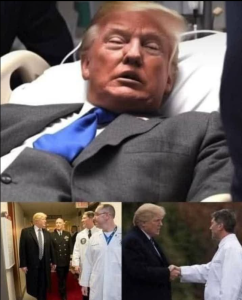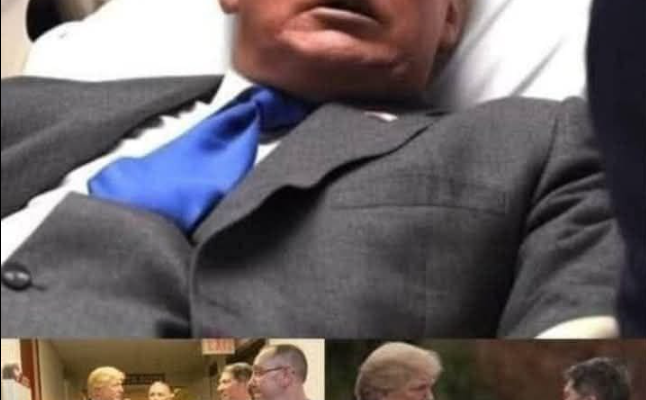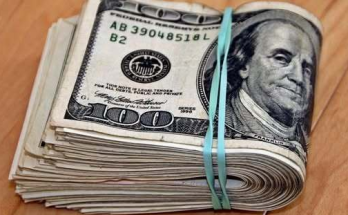Shock in America: The Attempt on Donald Trump’s Life and Its Aftermath
It was one of those moments when time itself seemed to freeze — a single sound, a single spark, and the entire nation held its breath. On July 13, 2024, former President Donald Trump was shot at during a campaign rally in Butler, Pennsylvania. The gunfire, which grazed his ear and narrowly missed taking his life, sent shockwaves across the United States and the world. What followed was a period of chaos, reflection, and reckoning for the Secret Service, for the American people, and for democracy itself.
A Day That Changed the Campaign Trail
The rally had started like any other. Thousands of Trump supporters filled the open field under a bright summer sky, waving flags and chanting familiar slogans. Security was present, but few suspected that danger was lurking so close. As Trump took the stage, speaking confidently to the crowd, a series of sharp cracks echoed through the air. At first, many thought it was fireworks or a malfunctioning speaker — until they saw the former president reach for his right ear and drop behind the podium.
Within seconds, Secret Service agents swarmed the stage, forming a human shield as they rushed Trump to safety. The shooter, later identified as a 20-year-old male, had positioned himself on a rooftop outside the secured perimeter. Before he could fire again, law enforcement neutralized the threat. The gunman was killed on the scene. One spectator lost their life, and several others were wounded.
Trump, bleeding from a graze wound to his ear, was quickly airlifted to a nearby hospital. Within hours, he released a brief message assuring the public he was “fine” and thanking the Secret Service and first responders. “God saved me today,” he said, his voice still hoarse but steady.
The Nation Reacts
News of the shooting spread across the globe in minutes. Major networks cut their broadcasts. Social media platforms flooded with disbelief, prayers, and speculation. For a country already deeply divided along political lines, the attack was a chilling reminder of how fragile peace and civility had become.
Both Democrats and Republicans condemned the violence. President Joe Biden called it “an assault not just on one man, but on democracy itself.” Former presidents Barack Obama and George W. Bush echoed similar sentiments, emphasizing unity and restraint. Even some of Trump’s fiercest critics publicly expressed relief that he had survived.
The markets reacted instantly. Stocks dipped in the immediate aftermath as uncertainty rippled through Washington. Campaigns were temporarily paused as the nation tried to make sense of what had happened. For many Americans, it was the first time in decades they had witnessed such a direct act of political violence against a national leader.
Security Under Scrutiny
As investigations began, questions mounted about how such a breach could occur. How could a shooter position himself within firing range of a former president? The U.S. Senate quickly launched an inquiry, and early findings painted a disturbing picture of lapses in coordination, outdated security measures, and communication breakdowns.
A Senate report later labeled the event “inexcusable,” stating that the Secret Service failed to fully secure the surrounding area and underestimated the potential threat of elevated positions. The agency’s director, Kimberly Cheatle, resigned amid mounting criticism, acknowledging “unacceptable errors” in the handling of the rally’s protection perimeter.
The tragedy spurred a complete review of security procedures for all high-profile public figures. New technology, including advanced drone surveillance and AI-driven threat detection, was fast-tracked to prevent similar incidents in the future.
Trump’s Response: Defiance and Determination
Just three days after the shooting, Trump appeared at the Republican National Convention — his ear still bandaged — to deliver one of the most anticipated speeches of his career. His first words to the roaring crowd became instantly historic: “I stand before you today by the grace of Almighty God.”
The moment was raw, emotional, and deeply symbolic. Many in attendance wept as Trump raised his fist — the same gesture he had made while being rushed off the Butler stage, blood running down his face. That image became a defining one: a mix of vulnerability and resilience that would reshape his campaign narrative.
Political analysts noted that the attempt on his life seemed to galvanize his base even more. Polls showed a surge in support, not just from loyal followers but from independents who admired his resolve. The incident transformed his campaign from a political movement into something almost spiritual for many of his supporters.
The Broader Implications
The Butler shooting didn’t just change one election cycle; it changed how Americans view political discourse itself. For years, tensions between parties had escalated, fueled by online vitriol, misinformation, and social division. The attack was a grim warning of how words can manifest into violence when the national temperature runs too hot.
Media organizations came under scrutiny for their role in amplifying hostility. Social platforms faced new demands for accountability, especially in the spread of threats and extremist rhetoric. In the months following the shooting, bipartisan efforts to strengthen protections for public officials gained traction, though mistrust still lingered.
The cultural impact was equally significant. For some, the shooting symbolized the dangers of unchecked hatred; for others, it became a rallying cry for strength and unity. Art, music, and documentaries soon emerged, reflecting on the day’s events — not just as a political turning point but as a human one.
One Year Later: Remembering Butler
By July 2025, the scars of that day were still visible but healing. A memorial was erected in Butler to honor the victims and the first responders who acted courageously. Trump himself visited the site quietly, away from cameras, leaving a wreath and a handwritten note that read: “For those who stood brave when the world shook.”
The nation continued to wrestle with the lessons of that day — about resilience, tolerance, and the responsibilities of leadership. Historians have already drawn comparisons to other watershed moments in U.S. history, like the assassination attempts on Ronald Reagan and Theodore Roosevelt. In each case, the incidents forced the country to confront its deepest divisions — and decide what kind of future it wanted to build.
A Nation Tested, A Democracy Enduring
The attempt on Donald Trump’s life could have plunged the United States into chaos. Instead, for a brief moment, it reminded Americans of something they had almost forgotten: that political disagreements should never erase shared humanity.
Though the wounds of that day may never fully close, the nation’s endurance stands as its own quiet victory. Out of violence came reflection. Out of fear came resilience. And out of near-tragedy came a renewed recognition that democracy, though fragile, is still strong enough to survive its darkest hours.

